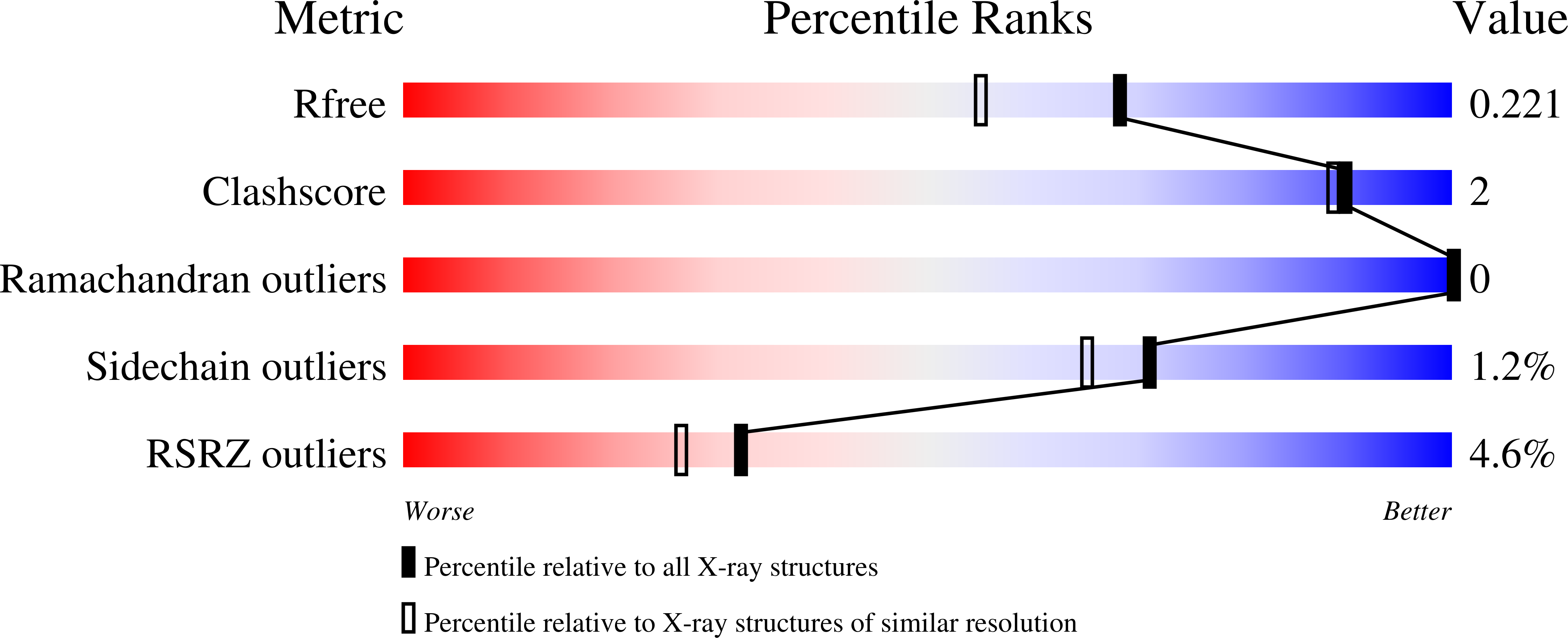Refined Regio- and Stereoselective Hydroxylation of l-Pipecolic Acid by Protein Engineering of l-Proline cis-4-Hydroxylase Based on the X-ray Crystal Structure.
Koketsu, K., Shomura, Y., Moriwaki, K., Hayashi, M., Mitsuhashi, S., Hara, R., Kino, K., Higuchi, Y.(2015) ACS Synth Biol 4: 383-392
- PubMed: 25171735
- DOI: https://doi.org/10.1021/sb500247a
- Primary Citation of Related Structures:
4P7W, 4P7X - PubMed Abstract:
Enzymatic regio- and stereoselective hydroxylation are valuable for the production of hydroxylated chiral ingredients. Proline hydroxylases are representative members of the nonheme Fe(2+)/¦Á-ketoglutarate-dependent dioxygenase family. These enzymes catalyze the conversion of L-proline into hydroxy-L-prolines (Hyps). L-Proline cis-4-hydroxylases (cis-P4Hs) from Sinorhizobium meliloti and Mesorhizobium loti catalyze the hydroxylation of L-proline, generating cis-4-hydroxy-L-proline, as well as the hydroxylation of L-pipecolic acid (L-Pip), generating two regioisomers, cis-5-Hypip and cis-3-Hypip. To selectively produce cis-5-Hypip without simultaneous production of two isomers, protein engineering of cis-P4Hs is required. We therefore carried out protein engineering of cis-P4H to facilitate the conversion of the majority of L-Pip into the cis-5-Hypip isomer. We first solved the X-ray crystal structure of cis-P4H in complex with each of L-Pro and L-Pip. Then, we conducted three rounds of directed evolution and successfully created a cis-P4H triple mutant, V97F/V95W/E114G, demonstrating the desired regioselectivity toward cis-5-Hypip.
Organizational Affiliation:
?Bioprocess Development Center, Kyowa Hakko Bio Co., Ltd., Tsukuba, Ibaraki 305-0841, Japan.



















